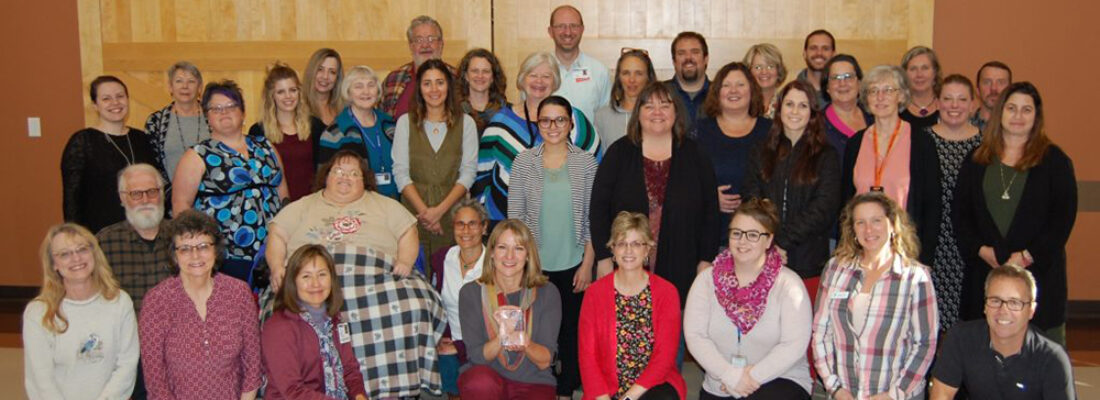Translational Science Benefits
Summary
Tillamook County Wellness Coalition, a multi-sector collaboration that works to improve the health of its community, was established in 2016. Over sixty community members and employees in Tillamook County have joined the Coalition since its inception.
In 2017, the Coalition, with support from OHSU and OSU, established a 10-year goal to reduce type 2 diabetes risks in Tillamook County. Recognizing these risks are related to many complex social factors, the Coalition established five areas for action:
- Conduct health promotion campaigns to influence beliefs, attitudes, and knowledge;
- Increase access to healthy foods;
- Increase access to physical activity;
- Increase diabetes risk screenings; and
- Work with employers to develop and implement wellness policies and programs.
Significance
Diabetes prevention was selected from five priorities derived from community health assessments conducted by various community stakeholders. Using a transparent and collaborative decision-making process, the coalition chose diabetes prevention because: (1) the diabetes rate in Tillamook County was higher than the state rate,1 (2) regional coordinated care organization (CCO) data showed that A1C control, a measure of average blood sugar level, was below target,2,3 and (3) interventions for diabetes prevention were thought to have the potential to impact other chronic conditions such as heart disease and mental health. Not only is the goal of this program to prevent diabetes in Tillamook County, but also it strives to build community capacity for addressing complex health issues through a collective impact approach.4
Benefits
Demonstrated benefits are those that have been observed and are verifiable.
Potential benefits are those logically expected with moderate to high confidence.
Increase screening rates to identify diabetes risk factors, including social determinants of health. demonstrated.
Community
Provide physical activity opportunities to youth and adults. demonstrated.
Community
Inform local stakeholders through participation in advisory boards. demonstrated.
Policy
This research has community, economic, and policy implications. The framework for these implications was derived from the Translational Science Benefits Model created by the Institute of Clinical & Translational Sciences at Washington University in St. Louis.5
In the early stages of this program, physical activity opportunities have increased by providing 3 annual school events that encourage students to explore the many hiking trails in the region. So far, these events have reached over 200 students in grades 7-12 (see video). Additionally, the U.S. Forest Service and local tourism agency are just beginning the process of collecting data for mapping outdoor activity locations and trails throughout the county, with the goal of increasing trail accessibility. Step It Up, a community-based walking program has over 50 participants. To increase healthy eating options, the Coalition is focusing on ways to increase accessibility of fruits and vegetables, including a mobile farmer’s market that will travel to outlying rural areas.
Increased screenings are being instituted both through the workplace and clinic efforts; so far four of these screenings have taken place at community health fairs. A mixed-methods approach is being used to understand diabetes-related screening, referral, and follow-up in local clinical and community organizations. All county clinics are working collectively to develop a universal screening tool and initiating a closed loop referral system. Large local employers aim to support smaller businesses by providing screening opportunities to not just employees and their families, but everyone in the community.
Members of the Coalition keep both Tillamook County leaders and the scientific community informed of their efforts by participating in five local advisory boards: the Community Health Advisory and Resource Team (CHART) for Clatsop County, Social Service Directors, Tillamook County Futures Council, Oregon State University Extension Advisory Council, and Lincoln County Health Integration Network; and presenting at two conferences: The Oregon Public Health Association Conference and the Oregon Rural Health Conference.
Through these collective efforts, Tillamook County’s aim is to reduce social and economic costs and increase the quality of life of its residents by reducing the risks of type 2 diabetes in the community.
-
- Columbia Pacific CCO (2014). Tillamook County Health Assessment. Accessed online October 4, 2019.
-
- Jozsa, M. (2016). A Walkthrough Chronic Disease in Our Community: Diabetes, Cardiovascular Disease, Colorectal Cancer. Presentation at the October 13, 2017 Tillamook County Year of Wellness Workshop: Tillamook, OR.
-
- 2019 CCO Incentive Measure Benchmarks, published September 13, 2019. Accessed online October 4, 2019.
-
- Kania, John, and Mark Kramer. “Collective Impact.” Stanford Social Innovation Review 9, no. 1 (Winter 2011): 36–41.
-
- Institute of Clinical & Translational Sciences at Washington University in St. Louis. Translational Science Benefits Model website. Published February 1, 2019. Accessed March 18, 2020

